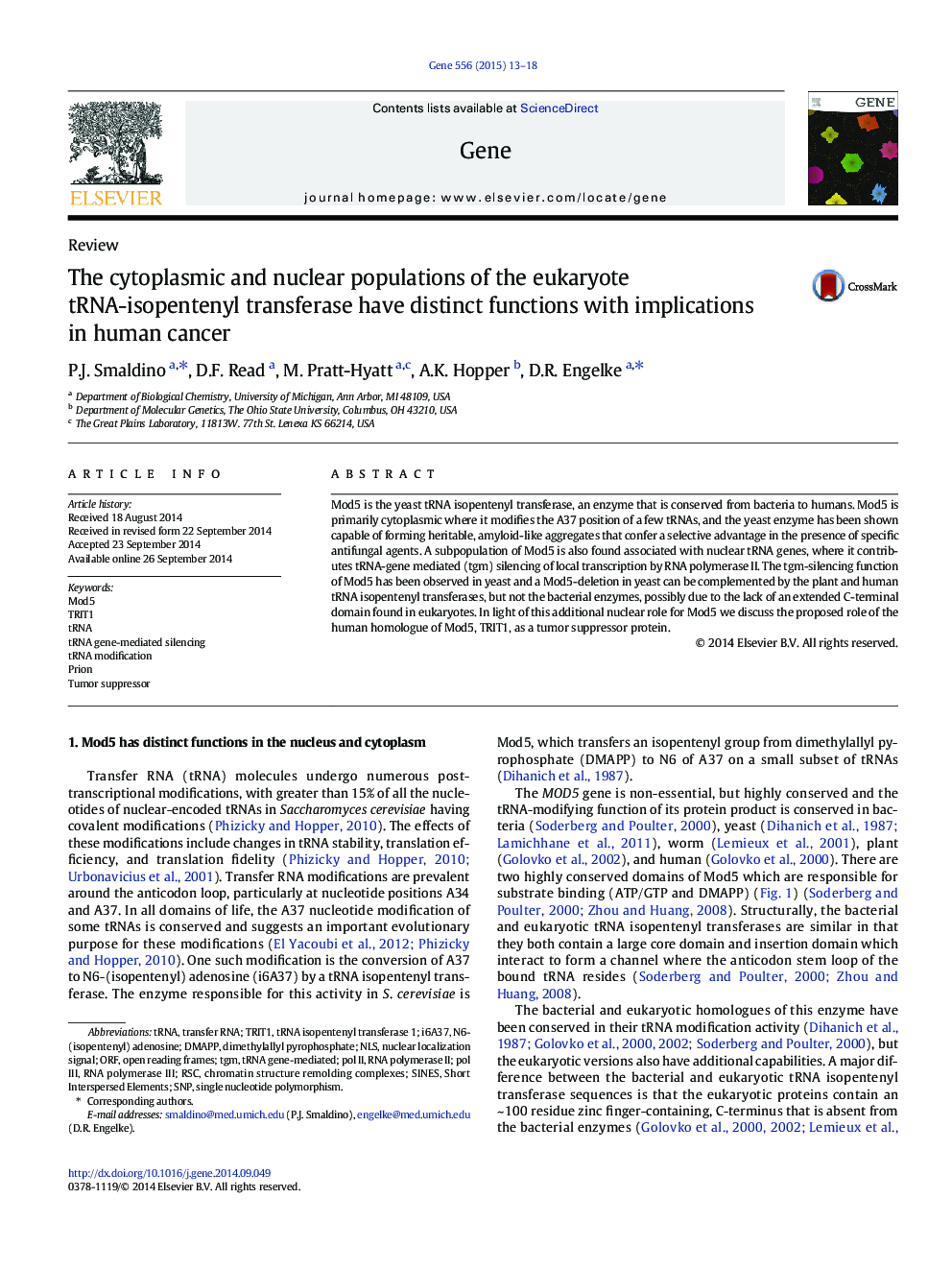| Article ID | Journal | Published Year | Pages | File Type |
|---|---|---|---|---|
| 2815973 | Gene | 2015 | 6 Pages |
•Mod5 and its dual roles in cytoplasmic tRNA modification and nuclear tRNA-gene mediated silencing.•Mod5-aggregation, a result of fungicide-selection, does not affect nuclear function.•The human homologue, TRIT1, resides both in the cytoplasm and nucleus in human cells.•We propose dual cytoplasmic and nuclear functions of TRIT1 and a potential link to human cancers.
Mod5 is the yeast tRNA isopentenyl transferase, an enzyme that is conserved from bacteria to humans. Mod5 is primarily cytoplasmic where it modifies the A37 position of a few tRNAs, and the yeast enzyme has been shown capable of forming heritable, amyloid-like aggregates that confer a selective advantage in the presence of specific antifungal agents. A subpopulation of Mod5 is also found associated with nuclear tRNA genes, where it contributes tRNA-gene mediated (tgm) silencing of local transcription by RNA polymerase II. The tgm-silencing function of Mod5 has been observed in yeast and a Mod5-deletion in yeast can be complemented by the plant and human tRNA isopentenyl transferases, but not the bacterial enzymes, possibly due to the lack of an extended C-terminal domain found in eukaryotes. In light of this additional nuclear role for Mod5 we discuss the proposed role of the human homologue of Mod5, TRIT1, as a tumor suppressor protein.
Graphical abstractMisfolding of Mod5 inhibits its cytoplasmic tRNA-modifying function, but does not affect its nuclear role in tRNA gene-mediated silencing. We hypothesize similar dual roles for the human Mod5 homologue, TRIT1.Figure optionsDownload full-size imageDownload high-quality image (222 K)Download as PowerPoint slide
